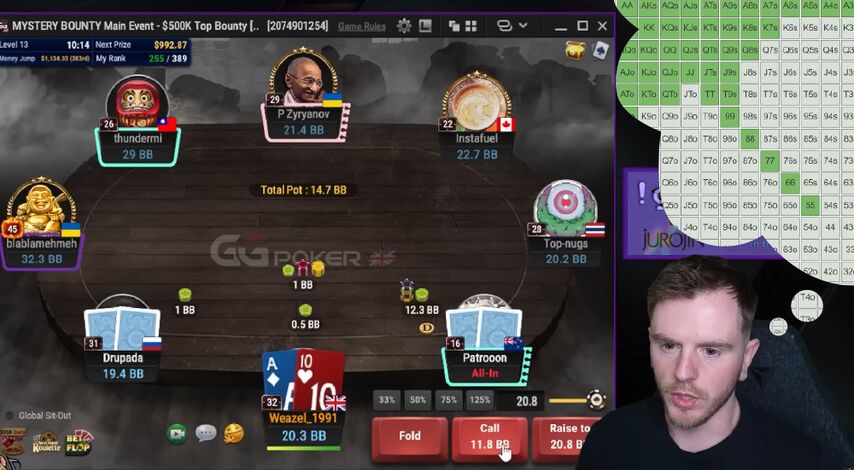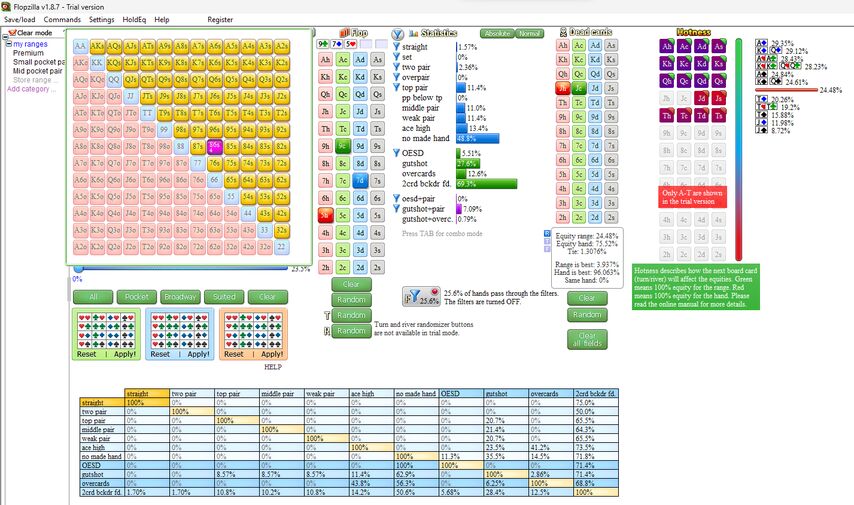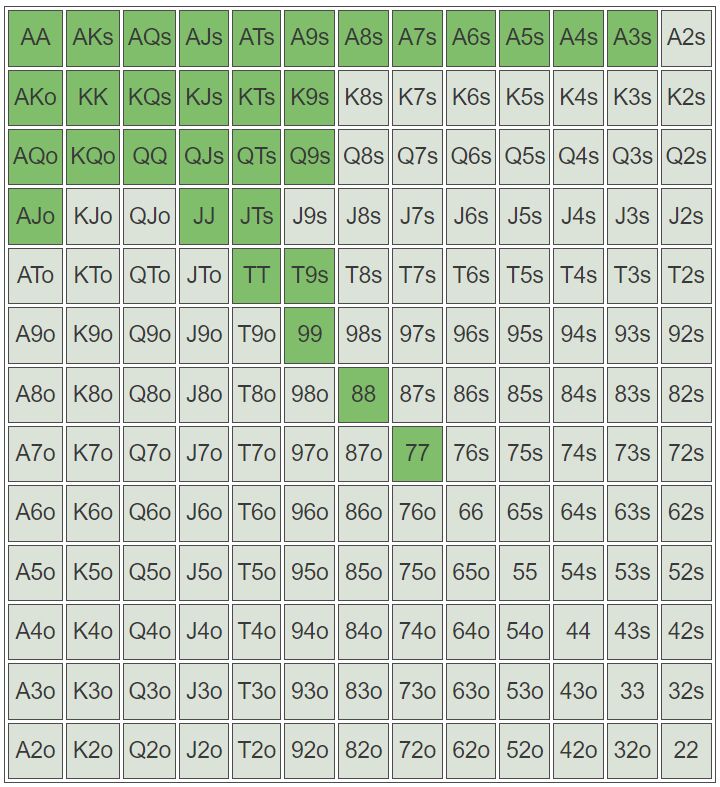What is the ranges in poker?
Ranges in poker are the multiple hands you might have at a specific time. For example, let’s imagine you are playing in a Texas Holdem cash game. A player makes a raise, and suddenly, it’s your turn to act. Without looking at your cards yet, take a moment. Try to imagine all of the hands that you want to continue playing with.
Obviously, you will have lots of premium pocket pairs like A-A, K-K, Q-Q, and so on. You’ll include hands, like A-K, A-Q, A-J, and several suited connectors like 9-10, J-10, and more. But which hands do you throw into the muck? Which hands should you re-raise with?
You need to think about your opponent's ranges too. Which hands are they raising with?
This is why experienced poker players build ranges for themselves and their opponents.

What is a Poker Range?
If you watch any poker streamers or Youtubers, you’ve probably heard them say “range” at some point.
If poker ranges are a fresh concept for you, fear not. We’re going to start with the basics first.
What is my opponent’s range?
Experienced poker players are always thinking about the hands their opponents could be holding.
Beginners tend to think about one hand at a time, not the entire range. This leads to costly errors over time. Occasionally, they’ll make great reads and guess hands correctly, but in the long run, they won’t be able to anticipate their opponent’s strategies.
One reason that new players don’t understand ranges is because of poker clips we see on YouTube. When a pro like Daniel Negreanu calls out his opponent’s exact hand in a major live tournament, he makes it look simple. What viewers don’t know, is that Negreanu got to the answer by understanding ranges.
What is my range?
Your ranges are affected by your position at the table. The closer you get to the dealer button, the wider your range can be, meaning that you include more hands.
In the under the gun position (known as UTG), you should be playing a tighter range, meaning you include fewer hands.
This is another aspect of poker that beginners misunderstand. Position changes everything, including the hands that you should be playing with.
Now that you know a bit more about ranges, let’s learn how to build a range.
Which Poker Site Are You Playing On?
Even if you already play Texas Holdem or Omaha poker online, there might be a better experience waiting for you on another platform.
All of the poker rooms on our list have been reviewed from top to bottom. Starting with a new poker site also means you can get welcome rewards and instantly boost your bankroll.
It’s a win-win for you. Upgrade to a better site and double your bankroll through bonuses.
How to Build a Range in Poker
Remember, your range changes every time you sit in a new position or make a new action. This means, there are technically an uncountable amount of ranges. Poker players build ranges for the most common situations they encounter at the table first.
You’ll need to construct:
Opening Ranges:
Your opening range includes the hands that you will make preflop raises with. Poker players also call these initial raises, “opening raises”. You should be clear on which hands you will open with and which ones you will fold. This applies to cash game and tournament poker (MTT).
You can find lots of charts available for these positions, but you should tweak your own charts a little inside a range tool like Flopzilla (which is free to use for almost a month).

3-Bet Ranges:
Decide which hands you will include in your 3-bet range, meaning the hands you re-raise with. A typical 3-bet range should be a mix of strong pocket pairs, suited A-X hands (A-K, A-Q, A-J, etc), and some semi-bluffs.
If your 3-bet range only contains strong hands, your opponents can easily adapt. For this reason, mixing some lower suited connectors (A-4, A-5) can make sense, especially in the right position. When you are on the button and last to act, you can in a few more suited hands and play more flexibly. In some positions, like big blind vs button matchups, you can get even more liberal with your range.

Poker Tools to Build and Analyze Ranges
At this point, you might still be feeling a little unsure about ranges. These charts can seem a little overwhelming, but once you use a range calculator tool, it will become second nature.
GTO Wizard is a perfect tool for range analysis, with advanced functions when you’re ready to use them.
You can analyze your own hand history, as well as experiment with different ranges.
While you are using the GTO Wizard program, you’ll be able to find ranges for common situations and unexpected ones too. This is one of the best ways to study ranges using advanced poker GTO calculators.

















